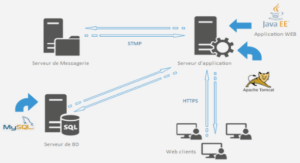Transport de patients en infarctus du myocarde vers un centre de cardiologie tertiaire
Introduction
Approximately 16,000 Canadians die from myocardial infarction every year, and most of these deaths occur outside the hospital <1>. Primary percutaneous coronary intervention (PCI) has been shown to be superior to fibrinolytic therapy in ST-segment elevation myocardial infarction (STEMI) patients when performed in a timely manner <2>. The use of prehospital electrocardiograms (ECGs) can reduce treatment delays and improve clinical outcomes <3>, and are recommended for early STEMI diagnosis <4>. Prehospital ECGs can be transmitted to an emergency department (ED) physician for interpretation while paramedics are on the scene or during transport <5, 6>. When a STEMI is diagnosed, the current recommendation is to activate the PCI centre while in transport if the PCI can be performed within 90 minutes from first medical contact (American Heart Association [AHA]/American College of Cardiology [ACC]) <4, 7>. While it is known that suspected STEMI patients are at risk for clinical adverse events during transport, it is unclear how often these events occur and which complications are most common. Four previous Canadian studies have investigated complications in STEMI patients transported by paramedics, with conflicting results. In the two first studies, complications occurred sporadically in 7/134 patients (5%) <8> and 3/89 patients (3%) <9>, while being common in the two others, i.e. 27% <10> and 35% <11>. Neither of these studies distinguished between high risk (i.e., clinically important) and low risk (i.e., clinically minor) adverse events. Furthermore, it is unknown whether longer ambulance transport times (which are often the case in rural areas) are associated with the frequency of clinical adverse events <12>. In the Chaudière-Appalaches and Québec City regions of Canada, an integrated STEMI program has been used to remotely manage suspected STEMI patients since July 2006 <13>, and consistently achieves the recommended 90-minute interval benchmark for PCI <14>. There are four non-PCI hospitals in the ChaudièreAppalaches region, and the farthest from the PCI centre is St-Georges hospital (98 km). Prior to this program, STEMI patients were transported to the nearest hospital, stabilized, and escorted by nurse or physician to the PCI centre, following the protocol of the Québec College of Physicians <15>. With implementation of the STEMI program, paramedics are able to wirelessly transmit a prehospital 12-lead ECG to an ED physician at a regional online medical control (OLMC) centre for interpretation. A confirmed STEMI diagnosis results in the regional OLMC contacting an interventional cardiologist at a PCI facility who then decides whether to activate the cardiac catheterization laboratory (CCL) and receive the patient. Since this system involves bypassing the nearest ED, potentially unstable STEMI patients are transported by Basic Life Support (BLS) paramedics (equivalent to primary care paramedics [PCPs]) for longer periods of time without nursing or physician supervision in person. The scope of practice required of EMS providers to safely manage STEMI patients in the out-of-hospital environment is an issue that has been raised before <10>. In Canada, BLS paramedics have a limited scope of practice that includes cardiopulmonary resuscitation, bag-valve-mask ventilation, semiautomatic defibrillation, 31 and esophageal tracheal airway with Combitube. They are only allowed to administer five medications (aspirin, nitroglycerin, salbutamol, epinephrine, glucagon). In the province of Québec, BLS paramedics are not authorized to install or administer intravenous (IV) medication or fluids, but this particular scope of practice is variable across Canada. The objectives of this study were 1) to establish a clinically relevant classification of complications in STEMI patients based on evidence from the existing literature; 2) to use this classification to determine the frequency of clinical adverse events among suspected STEMI patients in the Chaudière-Appalaches and Québec City regions; and 3) to assess the association between transport time and the development of clinically important and minor adverse events in this population.
Methods Study design
We performed a health records review of all remotely diagnosed STEMI patients transported directly by ambulance to the tertiary cardiology centre for PCI (IUCPQ-UL) between January 2007 and June 2016. Patients with dementia, dialysis, or instability who required immediate medical care were excluded. This project was approved by the ethics review board of the Centre intégré de santé et de services sociaux (CISSS) ChaudièreAppalaches and the Québec Heart and Lung Institute – Laval University (IUCPQ-UL), Québec, Canada. Data collection According to the Unité de coordination clinique des services préhospitaliers d’urgence (UCCSPU) protocol, the interval time between a first positive ECG and arrival at the PCI centre should be ≤ 60 minutes, and the mean interval between arrival at the PCI centre and balloon inflation in the CCL is 30 minutes <14>. A detailed description of the prehospital STEMI remote diagnosis procedure and non-PCI hospital bypass has been published previously <13>. Automated continuous ECGs were performed every 2 minutes in the Chaudière-Appalaches region using the Ortivus system (Danderyd, Sweden), and BLS paramedics received online medical support allowing for identification of new STEMI cases during transport and rapid rerouting to PCI centres. In the Québec City area, BLS paramedics had to transmit the ECG to UCCSPU before ambulance departure at the pick-up location using the Zoll medical system (Chelmsford, MA) and could not benefit from online medical support. During ambulance transport, paramedics verbally communicated clinical data to the UCCSPU nurse including age, sex, oxygen saturation, pulse, arterial blood pressure, level of consciousness according to Alert, Voice, Pain, Unresponsive 32 (AVPU) scale, distance to hospital, and any deaths that occurred during prehospital transport. Transport time was defined as the duration between departure from the pick-up location and arrival at the hospital. The nurse on duty entered all data in the UCCSPU clinical database after each episode of care. Each nurse received training on data entry. Over the study period, a total of 52 nurses entered clinical data provided by BLS paramedics. Due to missing data in the database, SB used a data extraction sheet containing the UCCSPU clinical data to validate data or complete the missing information for each patient using information from the ambulance paper reports of patients transported to the PCI centre. Classification of clinical adverse events A literature review was performed in order to classify adverse events in the prehospital setting as either “clinically important” or “clinically minor” (see strategy in Appendix A). Based on relevant studies identified through this search, emergency physicians (FB, PAL, AT and RF) and the registered nurse (DH) from the research team used clinical criteria to determine operational definitions of adverse events for systolic blood pressure (SBP), heart rate (HR), state of consciousness, and arrhythmias. The experts agreed with these definitions by consensus in a meeting. For every patient who experienced an event, the ECG was reviewed by PAL to determine the specific arrhythmia that occurred. The experts agreed that two or more different clinically minor events should be considered equivalent to one clinically important event. Comprehensive definitions for prehospital clinical events in STEMI patients were found in one study <10>. Based on this limited literature, operational definitions were determined and classified as either “clinically important” or “clinically minor” events for hypotension, bradycardia, desaturation, ventricular tachycardia with pulse (VT P+), altered level of consciousness (altered LOC) and pulse for atrial fibrillation (AFib). This classification scheme is shown in Box 1. We considered AFib pulse with HR > 120 bpm, AV Block (Mobitz 2 and high degree AV block), VT P+, pulseless ventricular tachycardia/ventricular fibrillation (VT/VF), and asystole or pulseless electrical activity (PEA) to be clinically important events. Statistical analysis Patient demographic and clinical characteristics were reported using descriptive statistics. The association between transport time, age, and sex with the occurrence of clinically important events was assessed with a multivariate ordinal logistic regression model. The dependent variable was stratified into three levels according to clinical events defined in Box 1: no event, 1 clinically minor event, or ≥ 1 clinically important events. Patients who experienced two or more different clinically minor events were placed in the clinically important events group. Clinically minor events occurring to the patients suffering from clinically important events were not reported. Transport time (independent variable) was classified into three levels (0-14 min, 15-29 min, ≥30 min), 33 representing the length of short, medium and long transport runs in the Chaudière-Appalaches and Québec City regions. Age was classified according to the interquartile ranges. Unadjusted and adjusted odds ratios (OR) were reported for all independent variables. All statistical analyses were conducted using SAS University Edition <16>.




